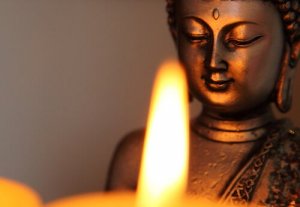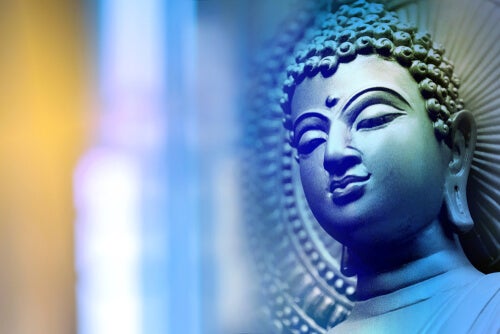Heart Sutra, the Buddhist Text Filled with Wisdom

The Heart Sutra is a wildly popular text from the Buddhist school of thought. It’s been studied and researched more than any other Buddhist writing. It attracts many followers to the philosophy due to its brevity and the way it neatly sums up the Buddhist outlook.
It’s intriguing that such a short text has been both so thoroughly researched by Buddhists and simultaneously identified as a teaching that requires a lifetime to truly understand. The Heart Sutra consists of only 14 verses, originally written in Sanskrit. It ends with what’s considered to be one of the most powerful mantras in Buddhism.
The Heart Sutra dates back to the first century A.D., although some believe it could be even older. It talks about several of the central concepts of Buddhism, such as emptiness, unattachment, compassion, form, will, and consciousness.

Emptiness and the Heart Sutra
Nearly all of the Heart Sutra centers on the concept of emptiness. But this has a different meaning than simply “nothingness”, as Westerners understand it.
Emptiness isn’t the same as an absence or lack since the emptiness of what or who isn’t present is filled with that absence. The same applies to the concept of lacking: it’s not empty, but filled with the imaginary presence of what’s missing.
When Buddhists talk about emptiness, they mean that nothing that exists possesses an intrinsic reality. It means that everything changes and is forever mutating. In other words, being and letting be. What we perceive with our senses is only the appearance of things. That’s why we think reality is “full”, even though it isn’t.
Emptiness is related to the constant mutability of everything that exists. Nothing separates or differentiates itself completely from everything else, nor is pure or impure, complete or deficient.
What do exist are mental formations that take us to the reality that we perceive. However, those mental formations aren’t reality. Reality is independent and changing at every moment even if we don’t perceive it.
The enigmatic mantra
Despite some thoughts that indicate the contrary, mantras aren’t magic words to bring good luck or accomplish certain goals. In Buddhism, they’re a path to reaching certain levels of meditation. Their function is to help wake consciousness.
The mantra at the end of the Heart Sutra is this: Gate gate Pāragate Pārasaṃgate’ Bodhi svāhā.
The language is Sanskrit and this is its translation: “Depart, depart, depart ascending, depart to the highest awakening. May it be”. Others have translated it in this way: “It has gone, it has gone, gone to the beyond. Completely exposed, relinquished. I wake. Salvation!”
This points us to the Sanskrit word gate, which references emptiness precisely, but on the personal plane and is equivalent to the concept of “non-I”. The thing that departs or goes is the “I”.
Thus, the mantra calls for the departure of the “I”, which is considered the source of mistakes and suffering. The “I”, in this case, is a synonym for the ego. The goal is for the ego to dissipate so that emptiness emerges.

The teachings of the Heart Sutra
Although the Heart Sutra is very complex, at the root it shows a path to awakening or salvation. This consists of abandoning the ego to find emptiness and, in that way, accept the deep perception and understanding of reality.
In other words, whoever is guided by their eyes, ears, and hands, just as by their minds, is destined not to know nor understand reality. By the same token, whoever manages to free themselves of the senses and their own mind’s way of thinking manages to fuse with reality and understand it, not intellectually but as a transcendental experience.
Awakening is precisely that state in which you stop perceiving the world through limited means, such as through your senses or your own mind. Enlightenment is equivalent to complete comprehension that brings with it two great Buddhist virtues: unattachment and compassion.
All cited sources were thoroughly reviewed by our team to ensure their quality, reliability, currency, and validity. The bibliography of this article was considered reliable and of academic or scientific accuracy.
López-Gay, J. (1992). El” Sutra del Corazón” y el” In-Sistencialismo”. Oriente-Occidente, 10(1-2), 17-26.
This text is provided for informational purposes only and does not replace consultation with a professional. If in doubt, consult your specialist.








